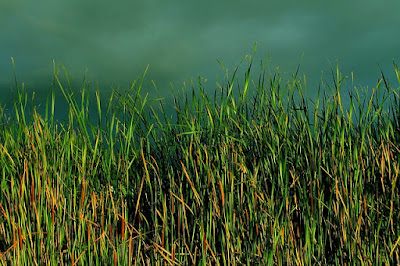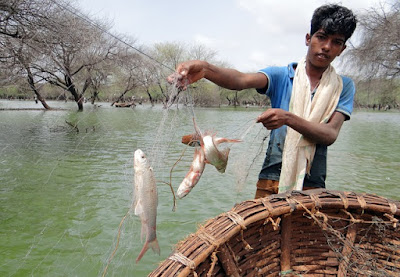KOLKATA WETLANDS-An Unconventional Ramsar Site
East Kolkata Wetlands are non-typical wetlands which are acting as sinks for sewage of Kolkata city thus avoiding the costs of waste water treatment plants. Where the sewage is going and how it is getting treated is analysed by an ecologist turned engineer Dr. Dhrubajyoti Ghosh with his meticulous study of the wetland.
The wetlands cover 125 square kilometers, and include salt marshes and salt meadows, as well as sewage farms and settling ponds. It is a NO-TAMPER ZONE and one of the Ramsar site among 25 others in India.
World-renowned as a model of a multiple use wetland, the site's resource recovery systems, developed by local people through the ages, have saved the city of Calcutta from the costs of constructing and maintaining waste water treatment plants. The wetland forms an urban facility for treating the city's waste water and utilizing the treated water for pisciculture and agriculture, through the recovery of nutrients in an efficient manner - the water flows through fish ponds covering about 4,000 ha, and the ponds act as solar reactors and complete most of their bio-chemical reactions with the help of solar energy.
The East Calcutta Wetlands were designated a "wetland of international importance" under the Ramsar Convention on August 19, 2002. Ramsar convention is conveyed in 1971 Feb 2 at Ramsar, Iran, intended for the protection and sustainable use of wetlands. It has listed 2231 Ramsar sites around the world. The Contracting parties (169 parties) meet every three years to adopt recommendations and resolutions to achieve the objectives dealt with the treaty.
Source: Hindusthantimes, Gaurdian.
 |
| image: Pixabay |
World-renowned as a model of a multiple use wetland, the site's resource recovery systems, developed by local people through the ages, have saved the city of Calcutta from the costs of constructing and maintaining waste water treatment plants. The wetland forms an urban facility for treating the city's waste water and utilizing the treated water for pisciculture and agriculture, through the recovery of nutrients in an efficient manner - the water flows through fish ponds covering about 4,000 ha, and the ponds act as solar reactors and complete most of their bio-chemical reactions with the help of solar energy.
The East Calcutta Wetlands were designated a "wetland of international importance" under the Ramsar Convention on August 19, 2002. Ramsar convention is conveyed in 1971 Feb 2 at Ramsar, Iran, intended for the protection and sustainable use of wetlands. It has listed 2231 Ramsar sites around the world. The Contracting parties (169 parties) meet every three years to adopt recommendations and resolutions to achieve the objectives dealt with the treaty.
 |
| Ankasamudra Wetland of Karnataka |
Source: Hindusthantimes, Gaurdian.

